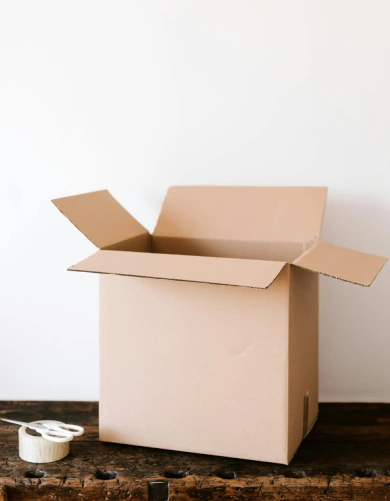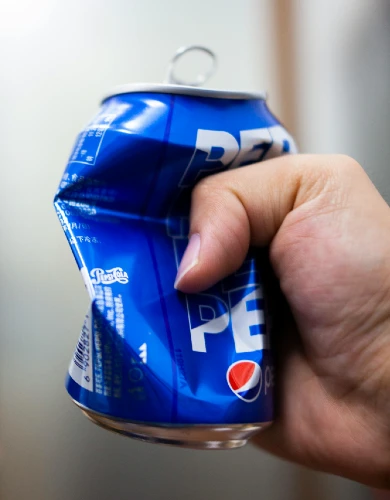Commercial recycling technology
Commercial waste recycling is on the rise, yet the industry is still far from reaching its ultimate goal where all waste besides the unavoidable is prevented, minimised or, in the worst case, recycled into a circular economy.
One challenge lies in businesses not segregating their waste properly. Another lie in recycling technologies themselves: some methods are expensive and time-consuming, others consume excessive energy, while others can’t be feasibly done under current circumstances.
In this article, we explore recycling technologies and what developments are currently underway to improve recycling outcomes.
💡 Key takeaways:
- Tyres are the most recycled waste stream, with over 95% of them being recycled into other use cases.
- Promising technologies include using smart devices, AI and robotics to improve every aspect of the process.
- Advancements in biochemistry are leading to enzyme-based methods for breaking down materials at a fraction of the cost.
Contents
- Commercial recycling in the UK
- Smart collection systems
- Advanced sorting techniques
- Cryogenic separation
- Energy-efficient melting
- Enzymatic and chemical processes
- Novel use cases
- Blockchain in waste
Commercial recycling in the UK
Commercial recycling is a common practice in the UK. Commercial waste regulations give businesses a legal duty of care over their waste, which must be prevented, minimised or recycled (in that order) and collected by a licensed commercial waste collection provider.
A wide range of commercial recyclable material streams are handled, including metals, plastics, cardboard, glass, organic waste, textiles, electronics, batteries, and tyres.
There are a range of recycling options for these materials, including commercial Dry Mixed Recycling (DMR), where recyclables are collected together and single-stream recycling, where each one is collected individually.
Recycling rates and costs vary for each waste stream. Here is a generalised summary of each recyclable waste stream:
| Waste material | Current technology | Approximate recycling rates (UK) | Approx. cost per ton (£) | Pros | Cons |
|---|---|---|---|---|---|
| Tyres | Mechanical Processing into Rubber Crumb | 95% | £100 - £200 | Pros: Reduces landfill, versatile applications. | Cons: Limited to certain product markets, processing challenges. |
| Cardboard/Paper | Pulping and deinking | 70-80% | £50 - £150 | Pros: High recycling rate, energy and resource saving. | Cons: Quality degradation over time, requires significant water. |
| Glass | Cullet production followed by optical sorting | 70% | £30 - £100 | Pros: Infinitely recyclable, maintains quality. | Cons: Collection and sorting can be costly. |
| Metal | Sorting by ferrous and non-ferrous, shredding and melting | 50-70% | £50 - £200 | Pros: High market value, infinitely recyclable without quality loss. | Cons: Energy-intensive process, requires efficient sorting. |
| Electronic and electrical waste (WEEE) | Manual and mechanical disassembly followed by precious metal recovery | 45-55% | £400 - £800 | Pros: Recovers valuable materials, reduces electronic waste. | Cons: Labor-intensive, hazardous materials handling. |
| Plastic | Sorting, cleaning, shredding, melting | 45-50% | £100 - £400 | Pros: Well-established, effective for certain types. | Cons: Limited to certain plastics, quality degradation over cycles. |
| Batteries | Manual sorting, mechanical processing, hydrometallurgical & pyrometallurgical treatment | 45% | £1,000 - £3,000 | Pros: Recovers valuable metals, reduces hazardous waste. | Cons: Complex, high cost for some battery types. |
| Organic Waste | Composting & anaerobic digestion | 40-50% | £50 - £150 | Pros: Reduces landfill use, produces compost/biogas. | Cons: Requires space, can be odoriferous. |
| Wood | Chipping, grinding for chipboard/biomass Fuel | 30-40% | £30 - £90 | Pros: Diverts from landfill, multiple use cases. | Cons: Limited to non-treated wood, market demand variability. |
| Textiles | Textile Sorting and Processing | 15-20% | £200 - £500 | Pros: Reduces landfill, potential for high-quality recycled products. | Cons: Complex sorting, quality degradation. |
Technological innovation in commercial recycling
Governments are striving to enhance the efficiency of recycling to reduce costs and mitigate the negative environmental impacts of waste.
Although existing recycling technologies have proven to be somewhat effective, embracing emerging solutions has the potential to turn recycling on its head. Here are some of the most promising technologies, presented in order of the recycling cycle:
Smart collection systems
Waste segregation and commercial waste collection are the first stages of any recycling process and the first where technology can make an impact. Advances in interconnectivity like 5G enable smart devices that can help improve proper waste segregation.
Smart commercial waste bins can monitor waste levels in real time, optimising collection routes and schedules to improve efficiency and reduce emissions from collection vehicles.
Smaller bin stations within the premises can be equipped with sensors to guide users on proper separation or even automatically sort waste at the point of disposal, enhancing the purity of the collected materials before reaching the sorting or recycling facility.
Advanced sorting techniques
Sorting is critical for recycling efficiency and quality. Up-and-coming sorting technologies involve sensors, AI, and robotics to separate materials more accurately and quickly than traditional methods like manual sorting and screening.
Sensors: New optical detectors use different spectral techniques (NIR, X-rays, hyperspectral, etc.) to produce images that identify and highlight materials that should not be in the waste stream faster and more accurately than ever.
AI and Machine Learning: These adaptable algorithms can improve sorting accuracy over time. Waste streams are rapidly changing as new waste materials emerge, and these ‘thinking’ algorithms can automatically adjust sensors and robotics to the new conditions without or with little human intervention.
Robotic sorting arms: Like sensors, these are getting faster and more accurate, enabling automatic material separation from a rapidly moving recycling stream.
Cryogenic separation
For specific materials like batteries and electronics, one promising development is the use of cryogenic freezing. This process mechanically separates components into their core constituents, enhancing material recovery and reducing the risks associated with handling hazardous materials.
Energy-efficient melting
Heating consumes a lot of energy, and more efficient ways of doing so can make recycling cheaper and more environmentally friendly. In this respect, innovations like induction melting and electric arc furnaces are showing promising results, especially with the rise of renewable energies to power them.
Enzymatic and chemical processes
Recent advancements in enzyme research have paved the way for biochemical processes capable of breaking down materials such as plastics, paper, and cardboard at the molecular level with minimal energy consumption.
Combined with chemical processes, these solutions offer significant energy and water savings compared to traditional methods like pulping and plastic melting. Moreover, they can break down materials that were previously considered non-recyclable, opening up new recycling opportunities, particularly for plastics.
Novel use cases
These innovations can help grow the demand for recycled materials:
3D printing
3D printing, a.k.a. ‘additive manufacturing’, offers a novel use for recycled materials by converting them into 3D printing feedstock. This can include plastics, metals, and even glass or paper-based materials, giving them new utility, and driving demand for recyclable materials and reducing reliance on ‘virgin’ materials.
Thermal batteries
Thermal batteries, which store heat, require materials that can withstand high temperatures and retain heat effectively, such as sand or cullet.
Interestingly, both of these materials are waste products from the construction and glass recycling industries, presenting a unique opportunity to repurpose waste into valuable energy storage solutions.
Blockchain for supply chain transparency
Blockchain technology can provide a transparent, immutable ledger of recycled materials’ journey from collection to final product. This not only ensures compliance with waste regulations, but verifies the recycled content in products to increase trust through the verifiability of a material.
Examples of innovative recycling technology in the UK
Our business waste experts have summarised three examples of innovative recycling technologies in the UK:
- Worn Again based in Nottingham: Uses chemical recycling to transform old textiles into new fabrics, supporting sustainable fashion practices.
- Re3’s AI-Powered Waste Sorting System in Reading: This material recycling facility uses robotic technology to sort waste more efficiently, increasing recycling rates and operational effectiveness.
- Cellcycle black mass recycling facility Manchester: This facility is the first in the UK to recycle end-of-life batteries from electric vehicles and other sources, using mechanical and chemical separation.

